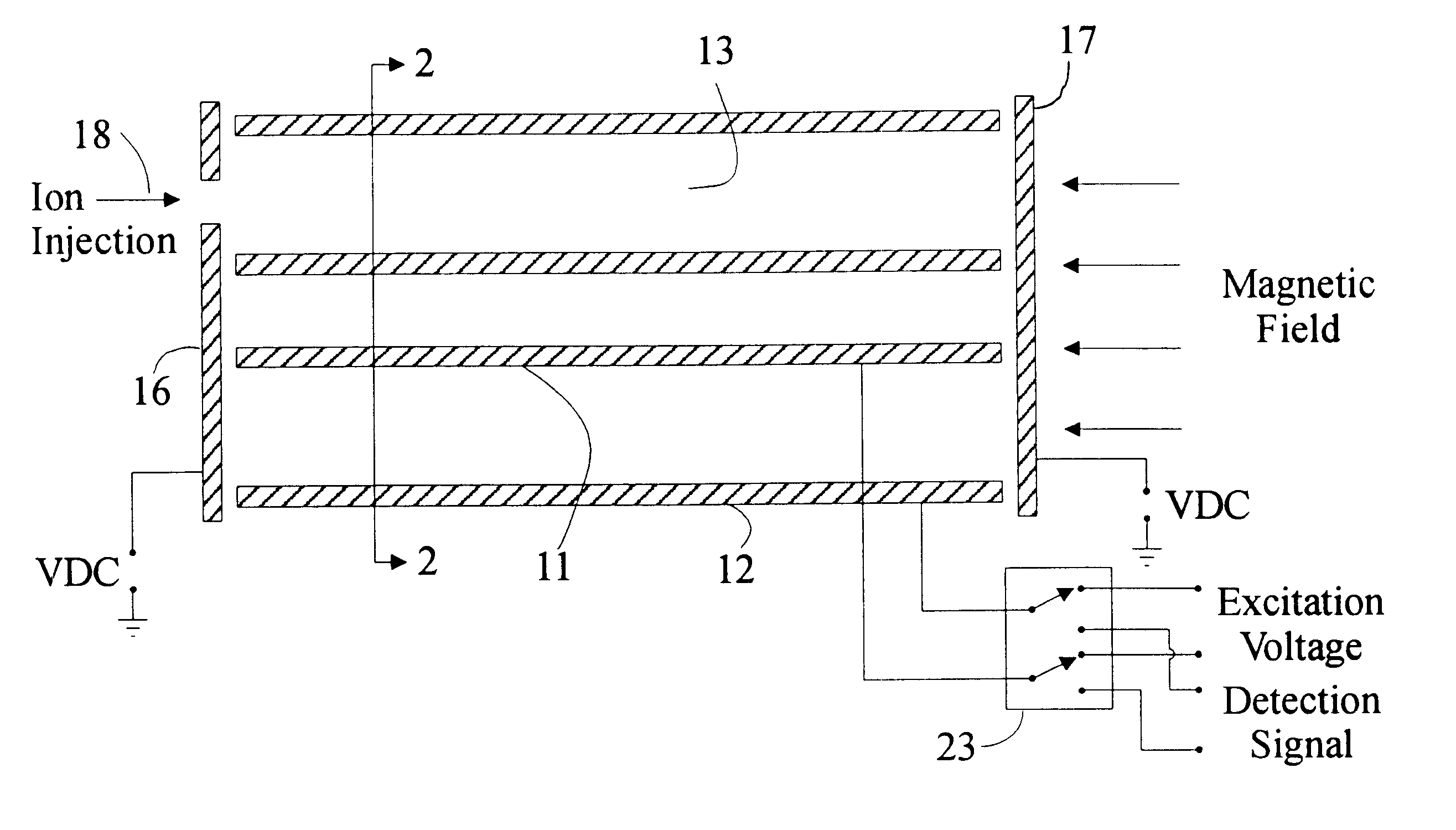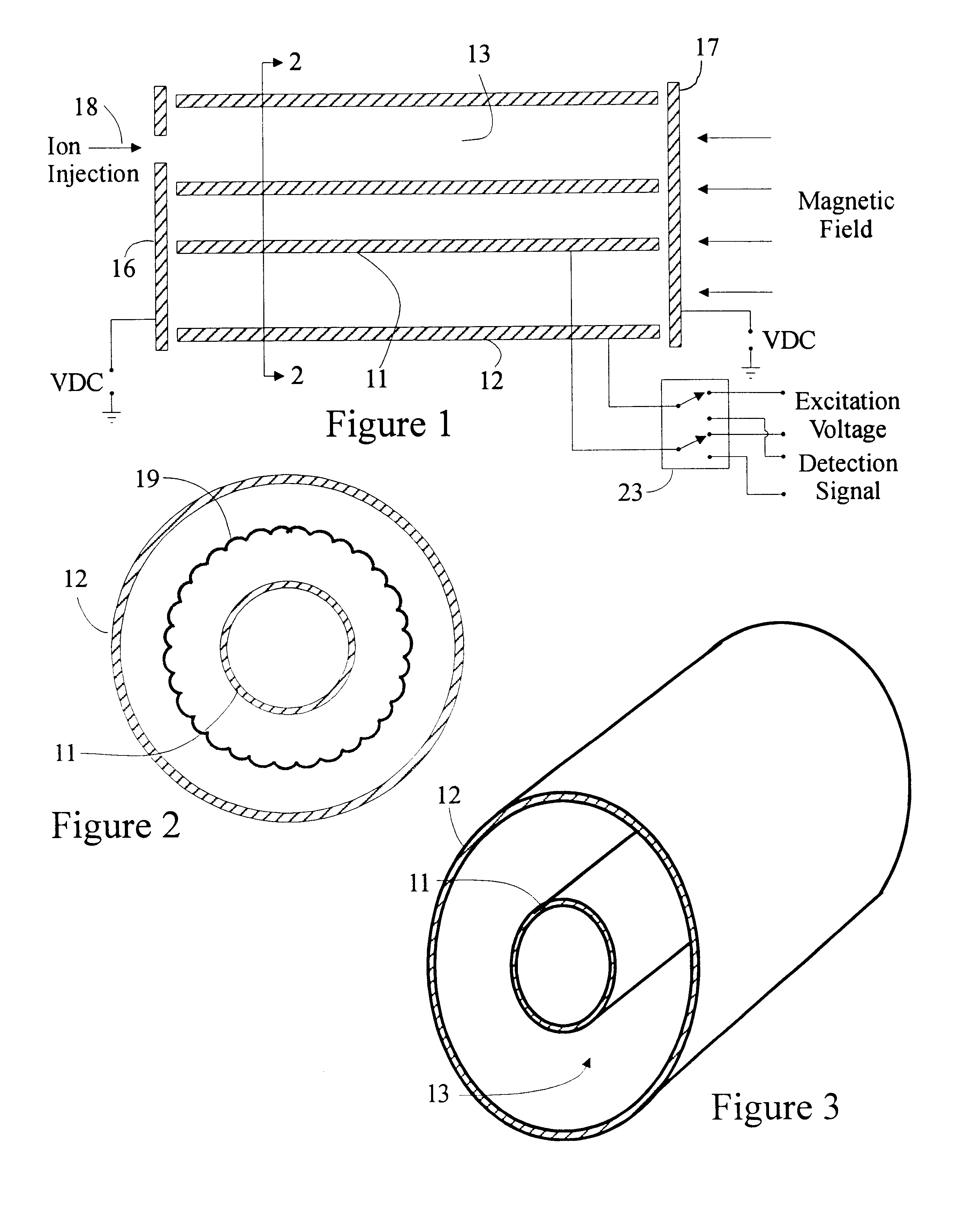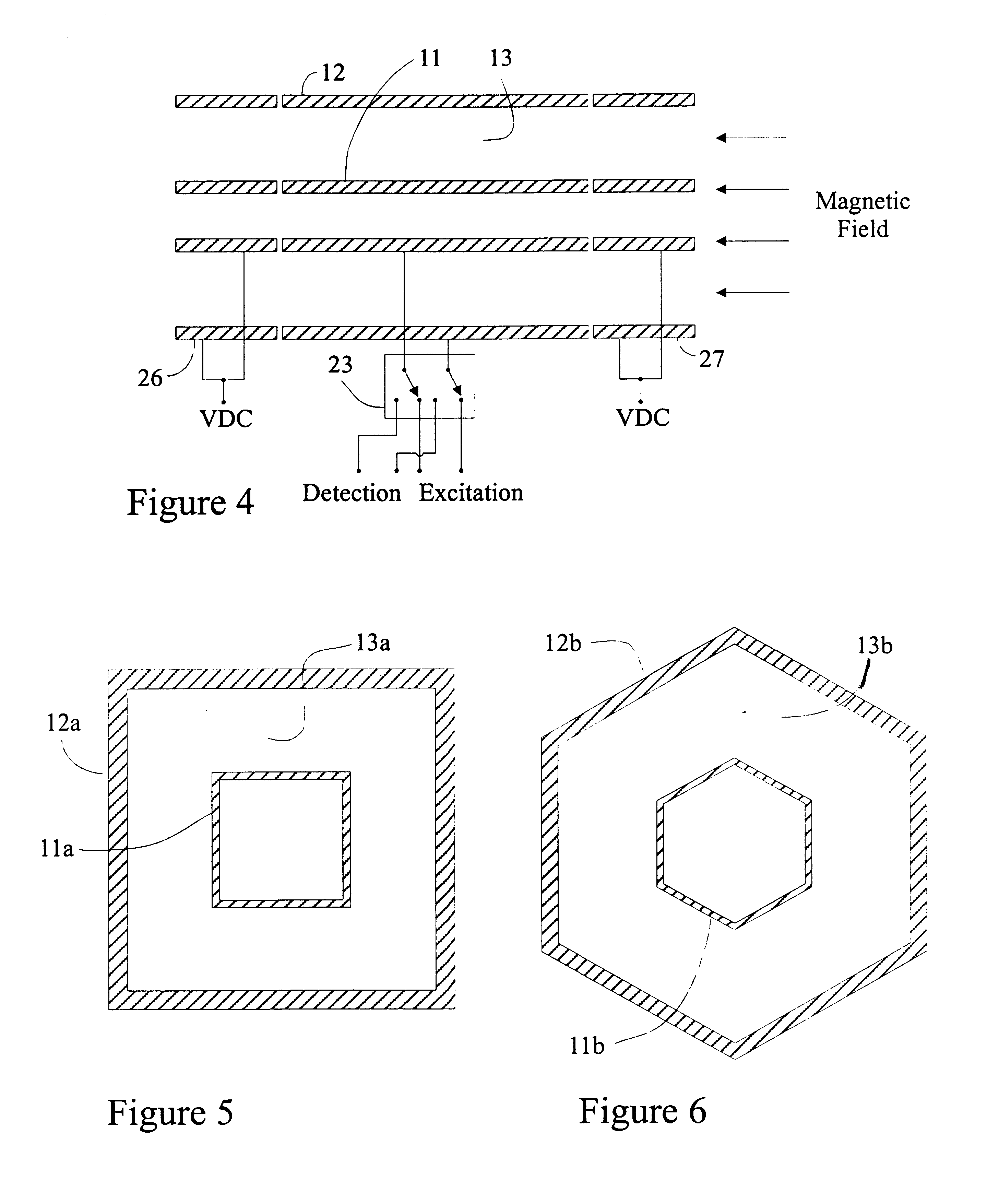High capacity ion cyclotron resonance cell
a cyclotron resonance, high-capacity technology, applied in the direction of mass spectrometry, instruments, separation processes, etc., can solve the problems of space charge-induced shift of the cyclotron frequency, limited ft-icr mass measurement accuracy, and significant harmonics in the acquired signal, so as to minimize the space charge-induced shift
- Summary
- Abstract
- Description
- Claims
- Application Information
AI Technical Summary
Benefits of technology
Problems solved by technology
Method used
Image
Examples
Embodiment Construction
Referring to FIGS. 1, 2 and 3, an ICR cell in accordance with one embodiment of the invention is illustrated. The cell includes spaced hollow cylindrical electrodes 11 and 12 which define an annular trapping space 13. Although shown as a hollow electrode, the electrode 11 need not be a hollow electrode.
Trapping electrodes 16 and 17 perpendicular to the magnetic field are spaced from the ends of the cylindrical electrodes and, as is well known, serve to confine ions within the trapping region 13. Ions are introduced into the region 13 by injecting off-axis from a suitable external source as indicated by the arrow 18. The off-axis injection provides a component of ion travel which is perpendicular to the magnetic field, and gives rise to magnetron motion as indicated by the curve 19, FIG. 2, in which the ions orbit around the central cylinder. This orbiting reduces the axial velocity of the ions and provides a greater dwell time within the ion trap. The ion trap is shown disposed in a...
PUM
 Login to View More
Login to View More Abstract
Description
Claims
Application Information
 Login to View More
Login to View More - R&D
- Intellectual Property
- Life Sciences
- Materials
- Tech Scout
- Unparalleled Data Quality
- Higher Quality Content
- 60% Fewer Hallucinations
Browse by: Latest US Patents, China's latest patents, Technical Efficacy Thesaurus, Application Domain, Technology Topic, Popular Technical Reports.
© 2025 PatSnap. All rights reserved.Legal|Privacy policy|Modern Slavery Act Transparency Statement|Sitemap|About US| Contact US: help@patsnap.com



